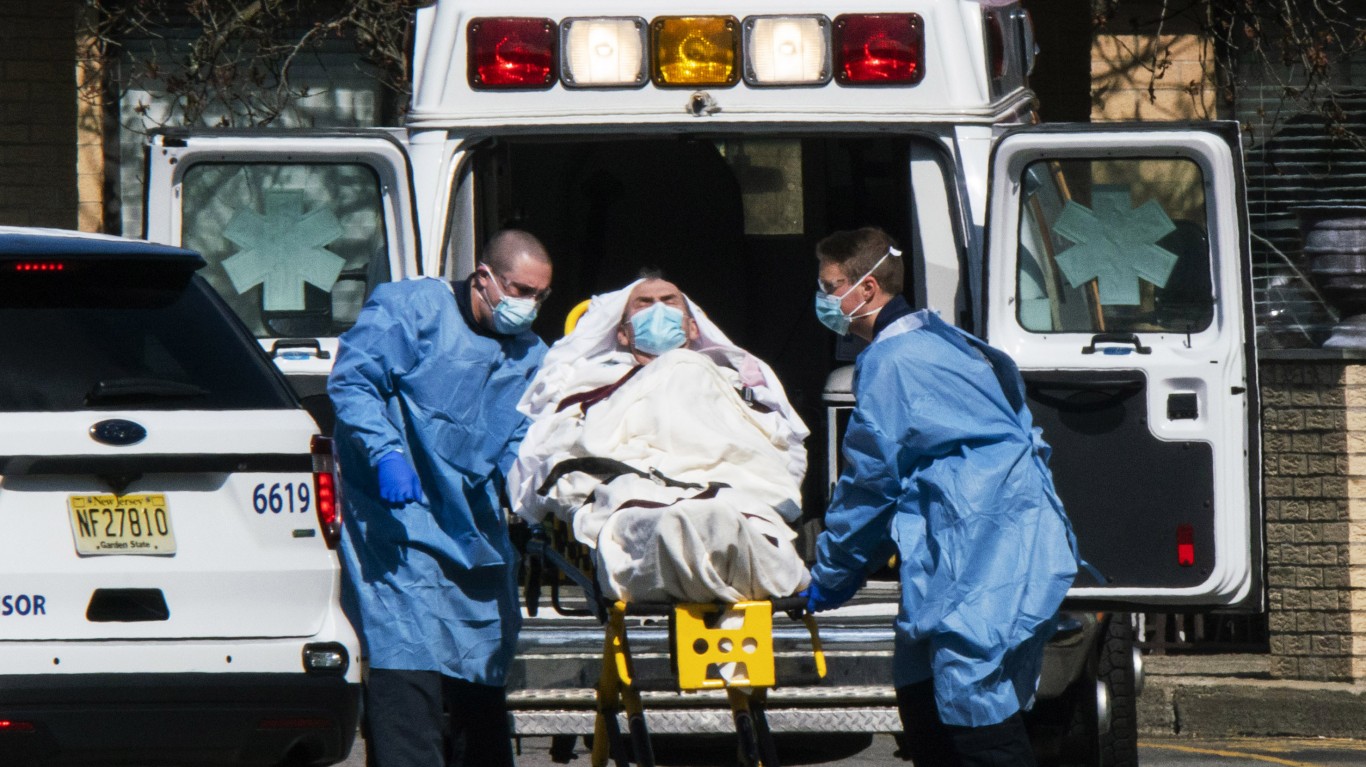Health and Healthcare
Wildely Followed Forecast Puts US COVID-19 Deaths at 378,000 With December Surge

Published:

The COVID-19 crisis continues to rage across America. Yesterday, U.S. confirmed cases rose by over 40,000. That puts the American total just shy of 7 million. The United States continues to have the highest confirmed case count in the world. Deaths passed 200,000 yesterday, also the highest in the world, and continue to rise by over 1,000 on many days.
There are deep worries that the lack of social distancing and mask-wearing in some parts of the country, coupled with cold weather that will drive people indoors, will cause a spike in deaths in late fall and early winter. A widely respected model forecasts those fears are accurate and has an estimate of over 378,000 American deaths by January 1, 2021. The figures assume a large surge in the final month of this year.
The Institute for Health Metrics and Evaluation (IHME) at the University of Washington’s School of Medicine forecasts have been used by the White House and are among the most carefully followed models anywhere. The institute periodically updates forecasts for worldwide deaths and deaths by country. Each forecast has a 1) “current projection,” 2) one for “mandates easing” and 3) one for “universal use of masks.” The current projection is based on a situation in which “mandates are re-imposed for 6 weeks whenever daily deaths reach 8 per million.” Under these circumstances, deaths in the United States are forecast at 378,321.
Under the universal use of masks set of assumptions, there is “95% mask usage in public in every location, reaching levels seen in Singapore. Mandates are re-imposed for 6 weeks if daily deaths reach 8 per million.” Singapore issued strict quarantines as COVID-19 began to spread. The U.S. death figure under these circumstances, the IHME says, is forecast to be 263,483 by January 1, 2021.
Finally, with the mandates easing case, there is “continued easing of social distancing mandates, and mandates are not re-imposed.” Under these circumstances, deaths by January 1 are forecast to be 445,605.
The institute sees significant trouble ahead under any of these cases. Dr. Christopher Murray, the director of IHME, recently said, “The worst is yet to come. I don’t think perhaps that’s a surprise, although I think there’s a natural tendency as we’re a little bit in the Northern hemisphere summer, to think maybe the epidemic is going away.”
Recently, new factors have pushed the acceleration of confirmed cases in the United States. At the top of the list is the reopening of universities for in-person classes. This has triggered tens of thousands of cases. A week ago, The New York Times put the figure at over 88,000 from 1,190 colleges and universities. Since that does not cover all institutes of higher education, the figure is too low.
There also have been several events where a large number of people have gathered in close proximity. Among the most recent is a motorcycle rally in Missouri that drew 125,000 people. Weeks earlier, the Sturgis Motorcycle Rally drew over 200,000 in South Dakota.
It is difficult to contemplate that 178,000 Americans more people could die of COVID-19 in 2020. Yet, the case made by the IHME is not far-fetched if large parts of the country where the disease has reemerged or the confirmed case count already has risen quickly do not lock down immediately.
If you’re one of the over 4 Million Americans set to retire this year, you may want to pay attention.
Finding a financial advisor who puts your interest first can be the difference between a rich retirement and barely getting by, and today it’s easier than ever. SmartAsset’s free tool matches you with up to three fiduciary financial advisors that serve your area in minutes. Each advisor has been carefully vetted, and must act in your best interests. Start your search now.
Don’t waste another minute; get started right here and help your retirement dreams become a retirement reality.
Thank you for reading! Have some feedback for us?
Contact the 24/7 Wall St. editorial team.